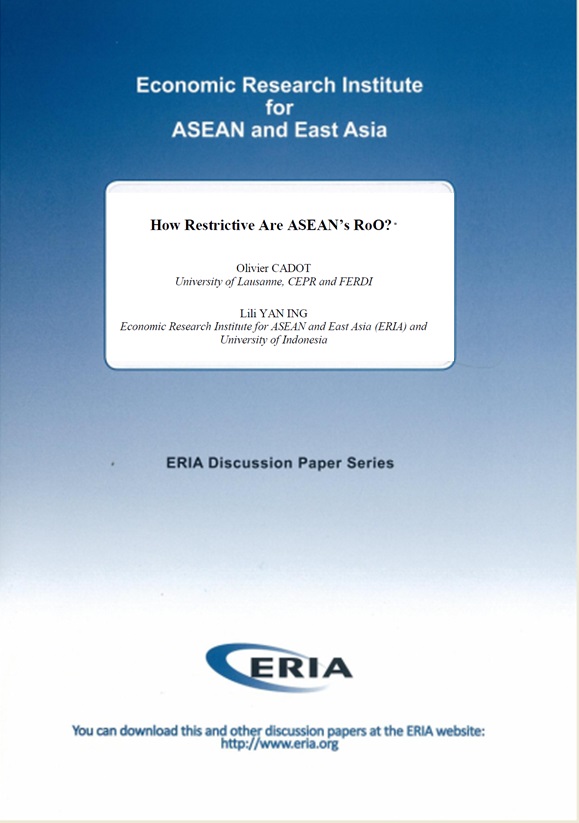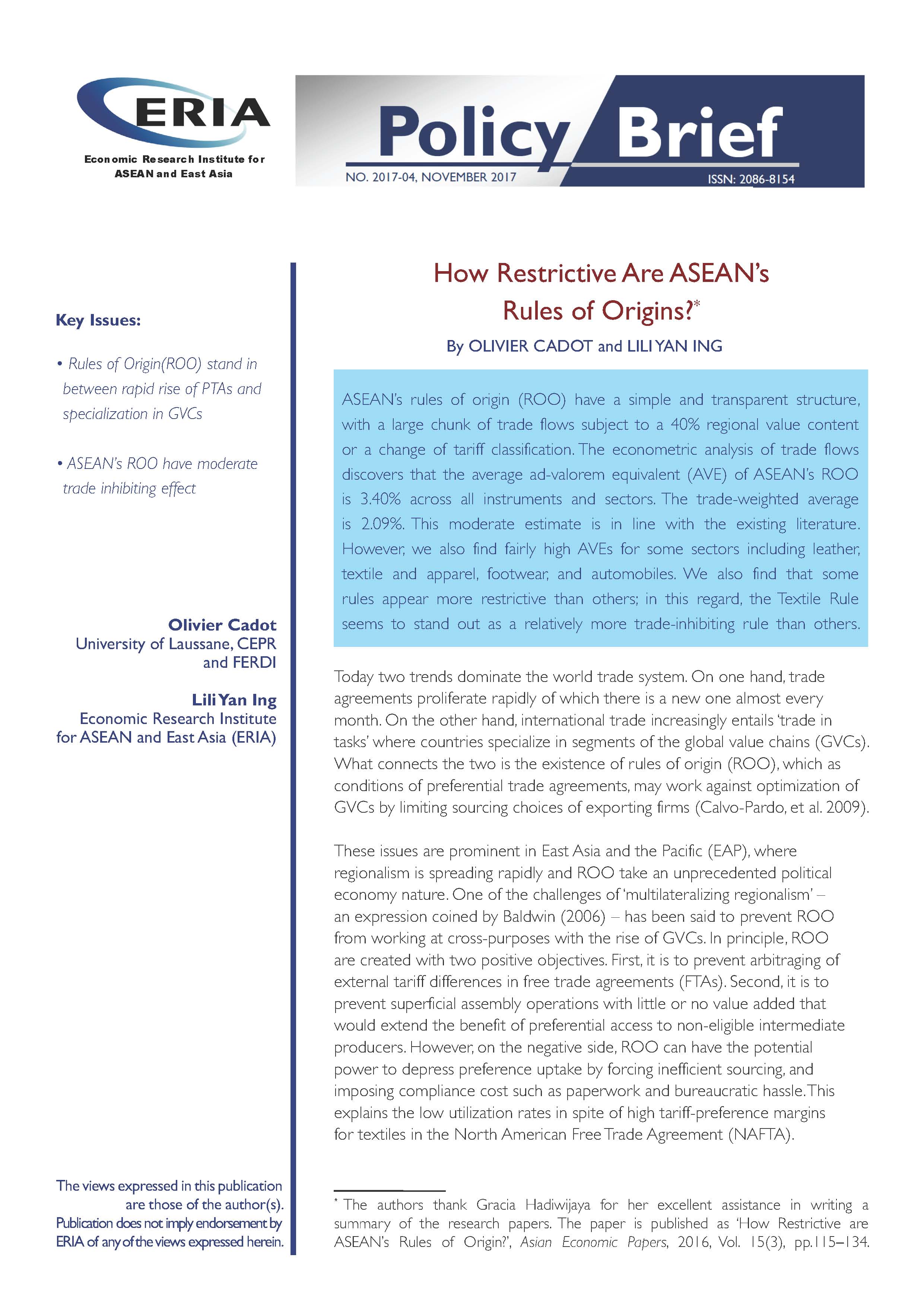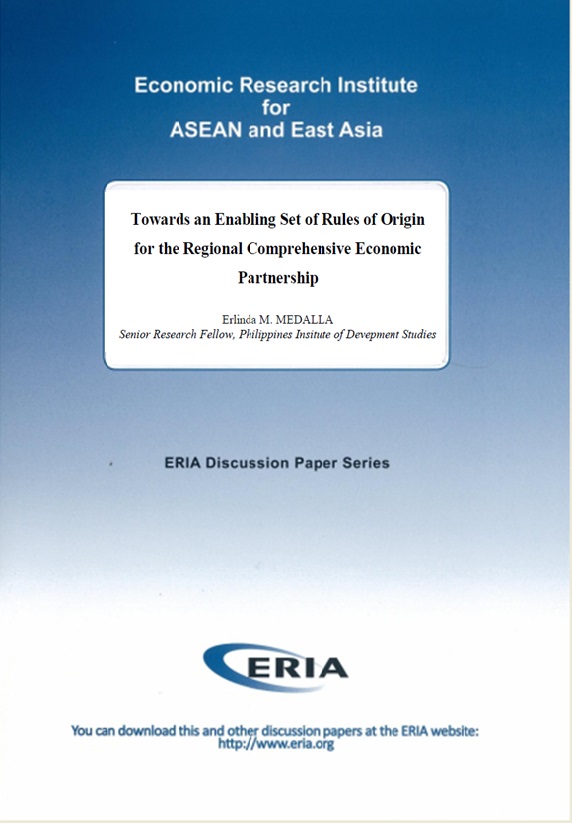How Restrictive are ASEAN's RoO?

Date:
12 September 2014Category:
ASEAN, Industry and Manufacturing, TradeType:
Discussion PapersTags:
Regulation and GovernancePrint Article:
This paper uses a disaggregated (product-level) gravity approach to estimate the effect of ASEAN's product-specific rules of origin (RoO) on regional trade, using original data on rules applicable at the six-digit level of the harmonized system. Overall, we find that the average ad-valorem equivalent (AVE) of ASEAN's RoO's is 3.40 percent across all instruments and sectors. The trade-weighted average is 2.09 percent. This moderate estimate is in line with the existing literature. However, we also find fairly high AVEs for some sectors including leather, textile and apparel, footwear, and automobiles. We also find that some rules appear more restrictive than others; in this regard, the Textile Rule seems to stand out as a realtively more trade-inhibiting rule than others.




